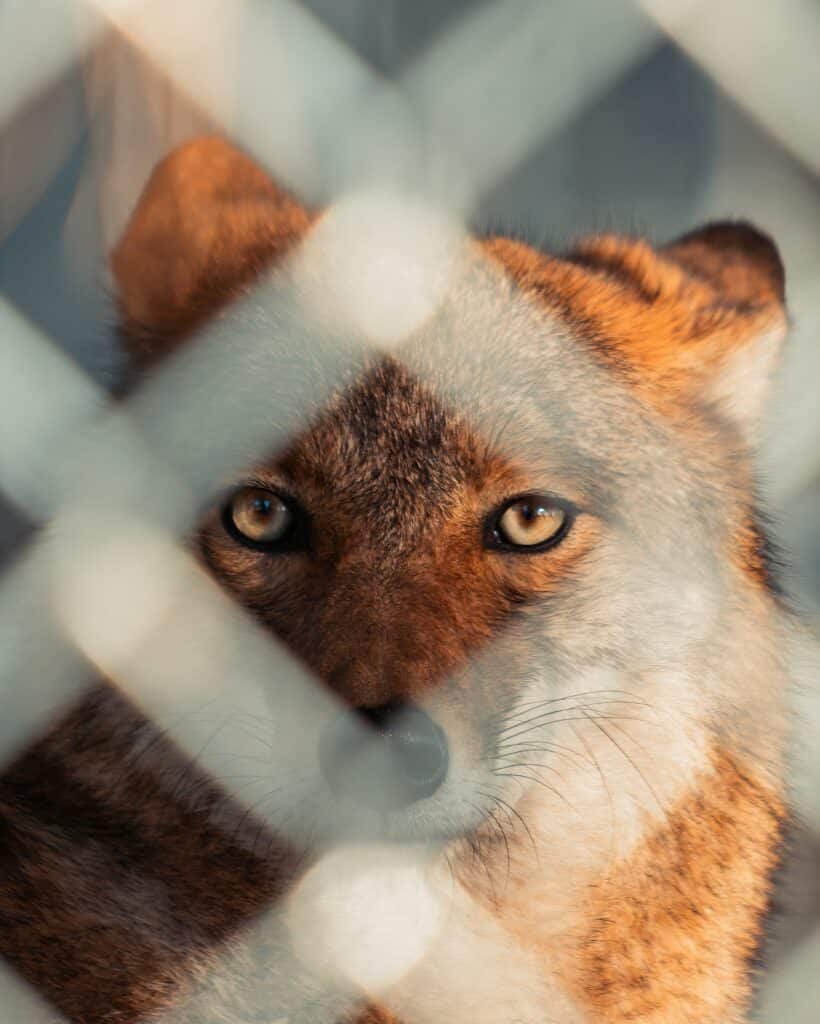Ohio is home to many types of wildlife, and among its notable inhabitants is the thriving predatory coyote population. These adaptable and resourceful canines have established themselves as top predators, crucial in the state’s ecosystems.
Understanding the behavior and impact of coyotes is essential for fostering coexistence with these fascinating creatures.
That’s why we should delve right into the world of Ohio’s coyotes, exploring their predatory nature, population growth, and the challenges they pose to agricultural communities!
Jump ahead to any section below!
Coyotes as Top Predators
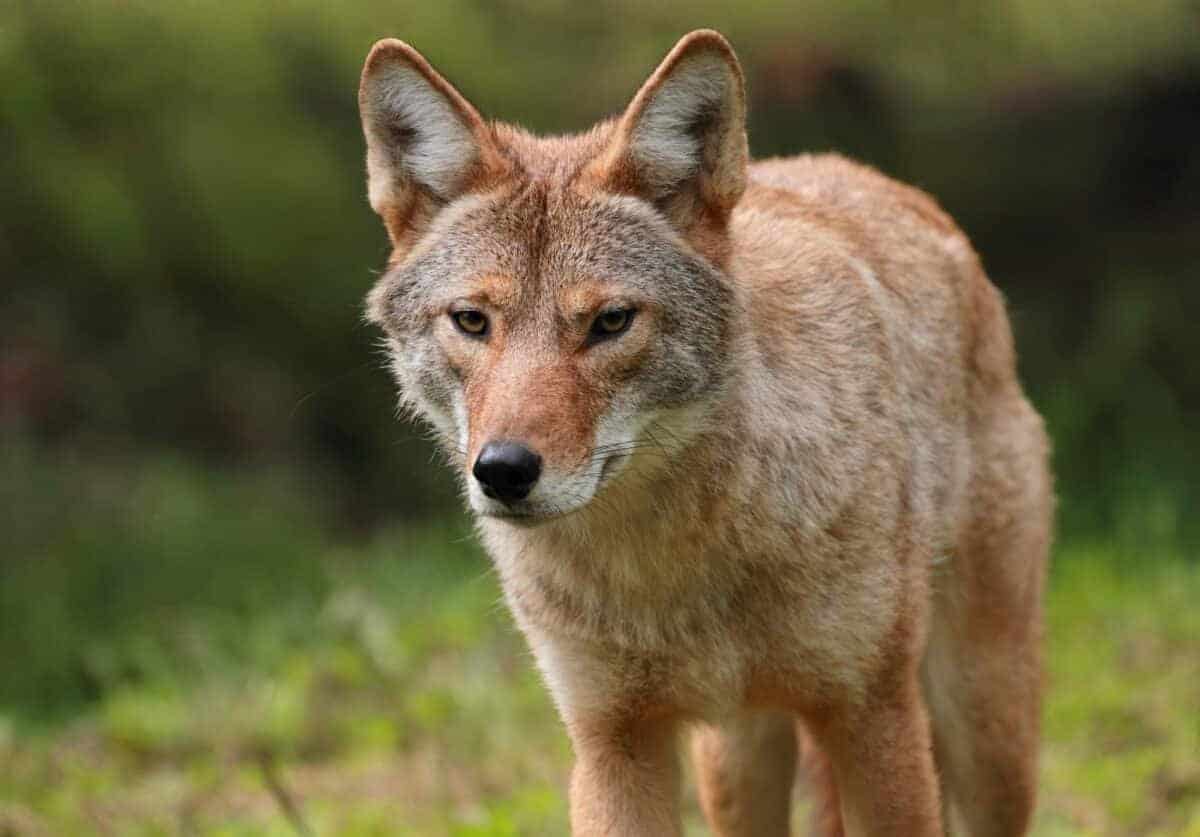
Coyote via Depositphotos
Coyotes hold a prominent position as top predators in Ohio’s ecosystems. Furthermore, their adaptability, intelligence, and hunting prowess have allowed them to thrive in various habitats, including urban and rural landscapes.
- Role in the Ecosystem
Coyotes play a crucial role in maintaining ecosystem balance. As apex predators, they regulate populations of smaller mammals such as rabbits, mice, and voles, thereby controlling their impact on vegetation and preventing overgrazing.
This helps maintain healthy plant communities and supports the overall biodiversity of Ohio’s ecosystems.
- Adaptability and Resilience
Coyotes have displayed remarkable adaptability, allowing them to survive and flourish in diverse environments. They can modify their diet according to available food sources, shifting from small mammals to fruits, insects, and even carrion when necessary.
Additionally, their resilience is evident in their ability to navigate human-dominated landscapes and coexist alongside human populations.
- Comparison to Other Top Predators
While coyotes are top predators, they coexist with other large carnivores in Ohio, such as foxes, bobcats, and raptors. Therefore, each predator has its ecological niche and plays a specific role in the food chain. Furthermore, coyotes’ adaptability and wide-ranging habitat use give them a competitive edge over some of their counterparts, allowing them to successfully establish themselves in various regions across the state.
By occupying the role of top predators, coyotes exert influence throughout Ohio’s ecosystems, shaping the balance of species populations and contributing to the overall health and functioning of the natural environment. Their presence and activities have far-reaching implications, impacting wildlife and human communities.
Discover more about Coyotes at National Geographic.
Coyote Population Boom in Ohio
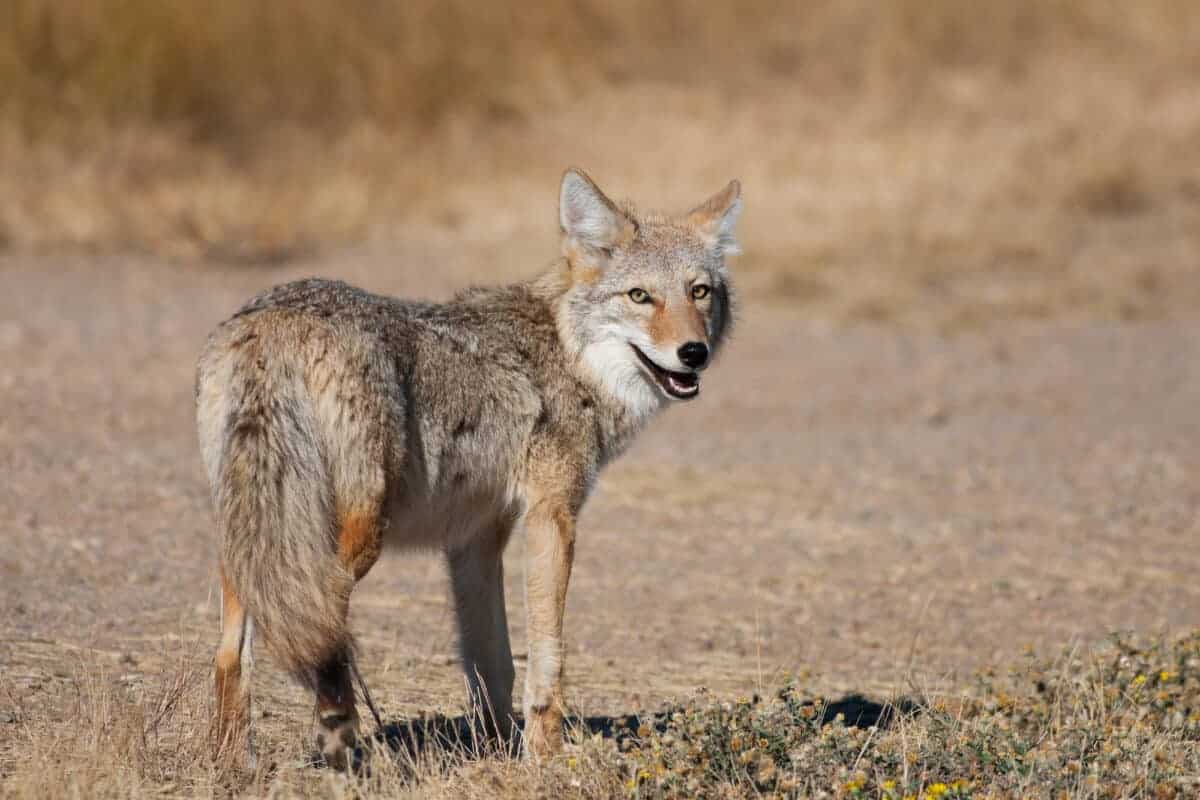
Ohio has witnessed a significant boom in its coyote population, with these adaptable predators expanding their range across the state. Multiple elements have contributed to this surge in numbers, highlighting the success and resilience of coyotes in Ohio’s changing landscape.
- Factors Contributing to Population Growth
The availability of suitable habitats, an abundance of prey species, and the absence of natural predators have all played a role in the coyote population boom. Ohio’s diverse landscapes, ranging from forests to farmlands and urban areas, provide ample resources and cover for coyotes to establish territories and raise their young.
- Increasing Coyote Numbers
Statistics indicate a steady increase in Ohio’s coyote population over the years. Reports from wildlife agencies and conservation organizations have documented rising sightings and encounters with coyotes, signaling their expanding presence throughout the state.
- Urbanization and Habitat Changes
Urbanization and habitat modifications in Ohio have inadvertently created favorable conditions for coyotes. Urban areas with green spaces, parks, and fragmented habitats offer coyotes food sources and shelter.
Their adaptability allows them to navigate these human-altered landscapes, leading to increased urban coyote sightings and interactions.
The booming coyote population in Ohio presents both challenges and opportunities. While their presence can lead to conflicts with humans and domestic animals, it also showcases these predators’ remarkable adaptability and resilience.
Understanding the factors behind their population growth is essential for implementing effective management strategies and promoting coexistence between coyotes and the communities they inhabit.
Check out: Unearth the Reality of Ohio’s Venomous Spiders.
Coyote Threats to Agriculture
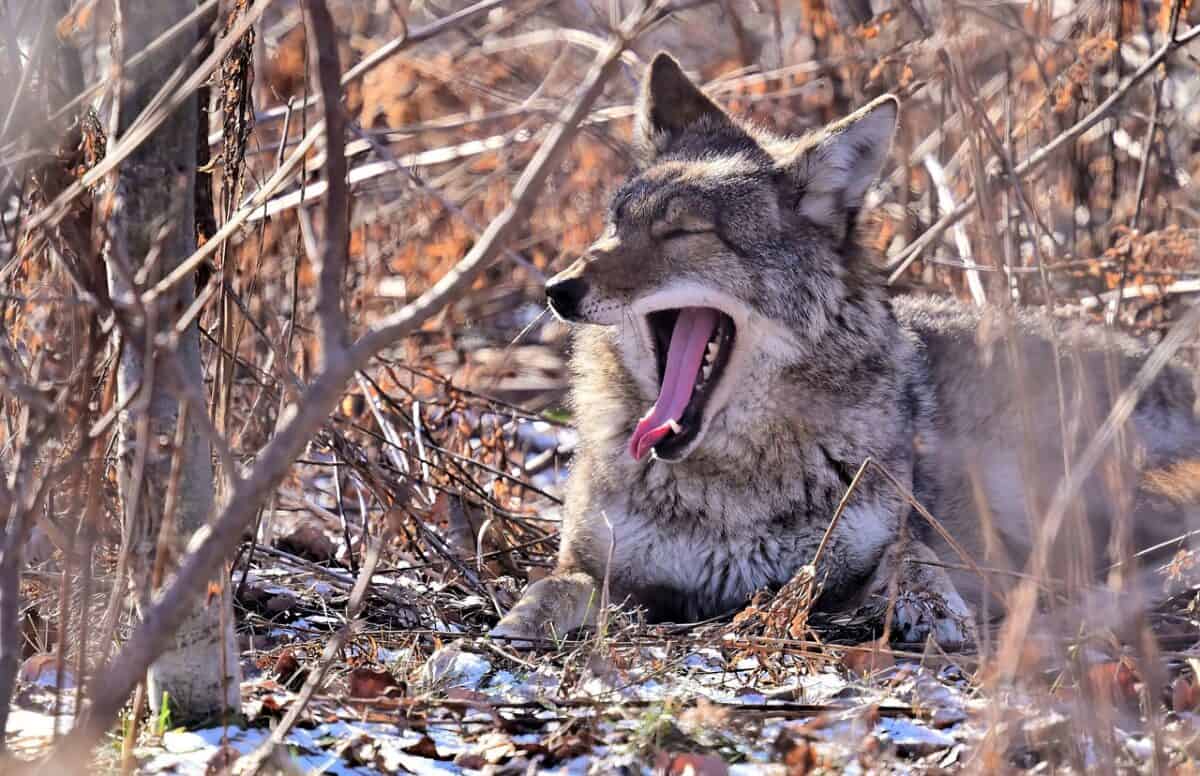
Coyote via Pixabay
Coyotes pose significant threats to agriculture in Ohio, particularly to livestock and crops. Understanding these challenges is crucial for farmers and researchers in developing effective strategies to mitigate conflicts and minimize economic losses.
- Challenges Faced by Farmers
Coyote predation presents a constant concern for farmers, especially those with livestock operations. Coyotes can prey on vulnerable animals, such as sheep, goats, and poultry, leading to substantial financial losses. Additionally, crop damage caused by coyotes digging for rodents or feeding on fruits and vegetables can impact agricultural productivity.
- Research Efforts to Understand Coyote Threats
Ohio State University researchers have been actively studying coyote behavior and its implications for agricultural communities. Their research aims to provide farmers with a better understanding of coyote predation patterns, strategies for protecting livestock, and insights into deterring coyotes from agricultural areas.
Human-Coyote Coexistence
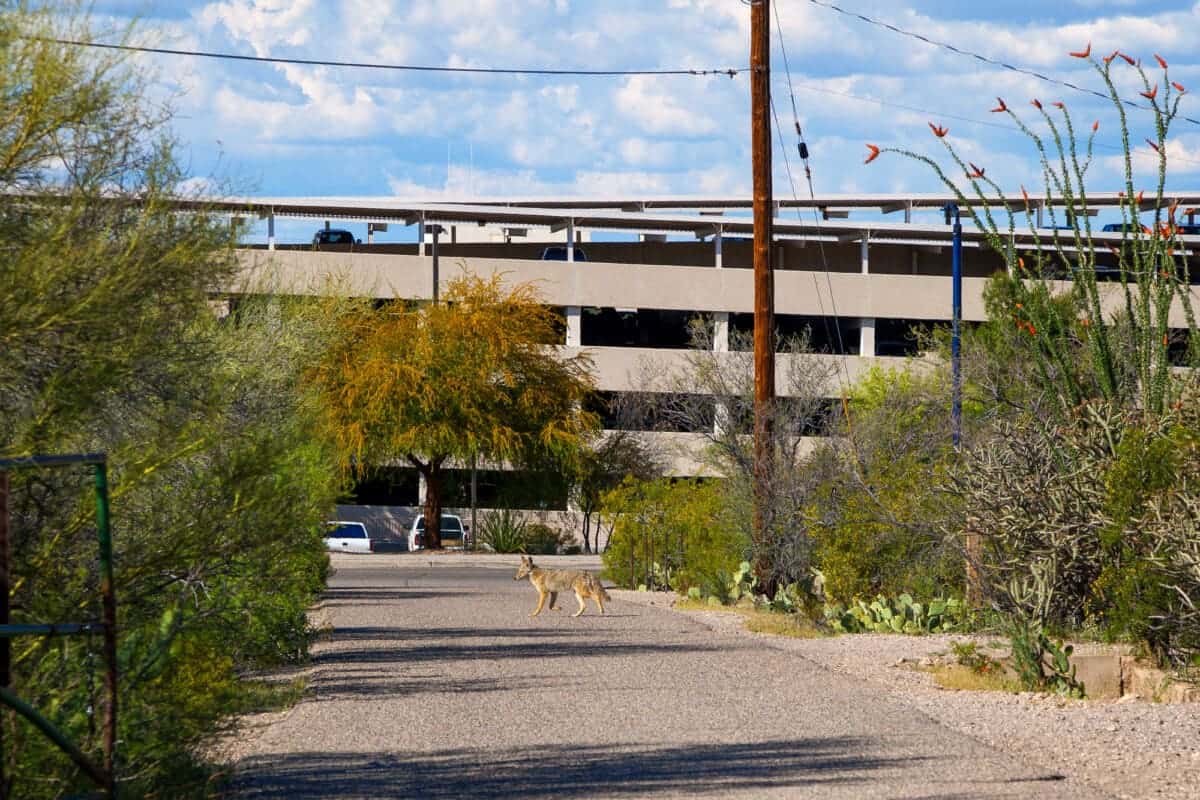
Coyote crossing road via Shutterstock
Promoting coexistence between humans and coyotes is essential for maintaining the balance of ecosystems while addressing concerns for human safety and property.
By adopting proactive measures and fostering understanding, communities can minimize conflicts and ensure a harmonious relationship with Ohio’s coyote population.
- Importance of Coexistence
Coyotes have existed in Ohio for over a century, and their presence is a testament to their adaptability and ecological significance. Recognizing their role in the ecosystem and embracing coexistence allows for a healthier natural balance and preserves the region’s biodiversity.
- Guidelines for Preventing Negative Interactions
Educating the public about coyote behavior and implementing preventative measures can reduce the potential for negative interactions.
Recommendations include:
- Securing garbage storage.
- Removing food attractants.
- Keeping small pets indoors or supervised.
- Refraining from feeding coyotes.
Additionally, it is crucial to appreciate coyotes from a safe distance and avoid approaching or attempting to tame them.
- Importance of Education and Public Awareness
Raising awareness about coyotes and their behavior is essential in fostering coexistence. Educational programs, community workshops, and informational materials are critical in providing accurate information to residents, farmers, and policymakers. Understanding coyote behavior helps dispel myths and misconceptions while promoting informed decision-making in managing human-coyote interactions.
Research and Conservation Efforts

Ongoing research and conservation efforts in Ohio are instrumental in understanding coyote behavior, mitigating conflicts, and ensuring the long-term conservation of these remarkable predators.
- Ohio State University Research
Ohio State University conducts extensive coyotes research to enhance understanding and inform management decisions. Studies focus on coyote ecology, behavior, and their interactions with agricultural landscapes.
By studying these aspects, researchers can provide valuable insights into coyote population dynamics and effective strategies for farmers and communities.
Learn more about Ohio State University’s Urban Coyote Research here!
- Collaboration and Partnerships
Collaboration among wildlife agencies, researchers, farmers, and community organizations is essential for successful conservation efforts. By pooling resources, sharing knowledge, and fostering cooperation, stakeholders can develop comprehensive management plans that address the needs of wildlife and human communities.
- Conservation Education and Outreach
Conservation organizations and parks in Ohio actively engage in education and outreach programs to promote awareness and understanding of coyotes.
These initiatives include educational workshops, interpretive programs, and informational materials that highlight the ecological importance of coyotes and provide guidance on responsible interactions with them.
Celebrating Ohio’s Coyotes
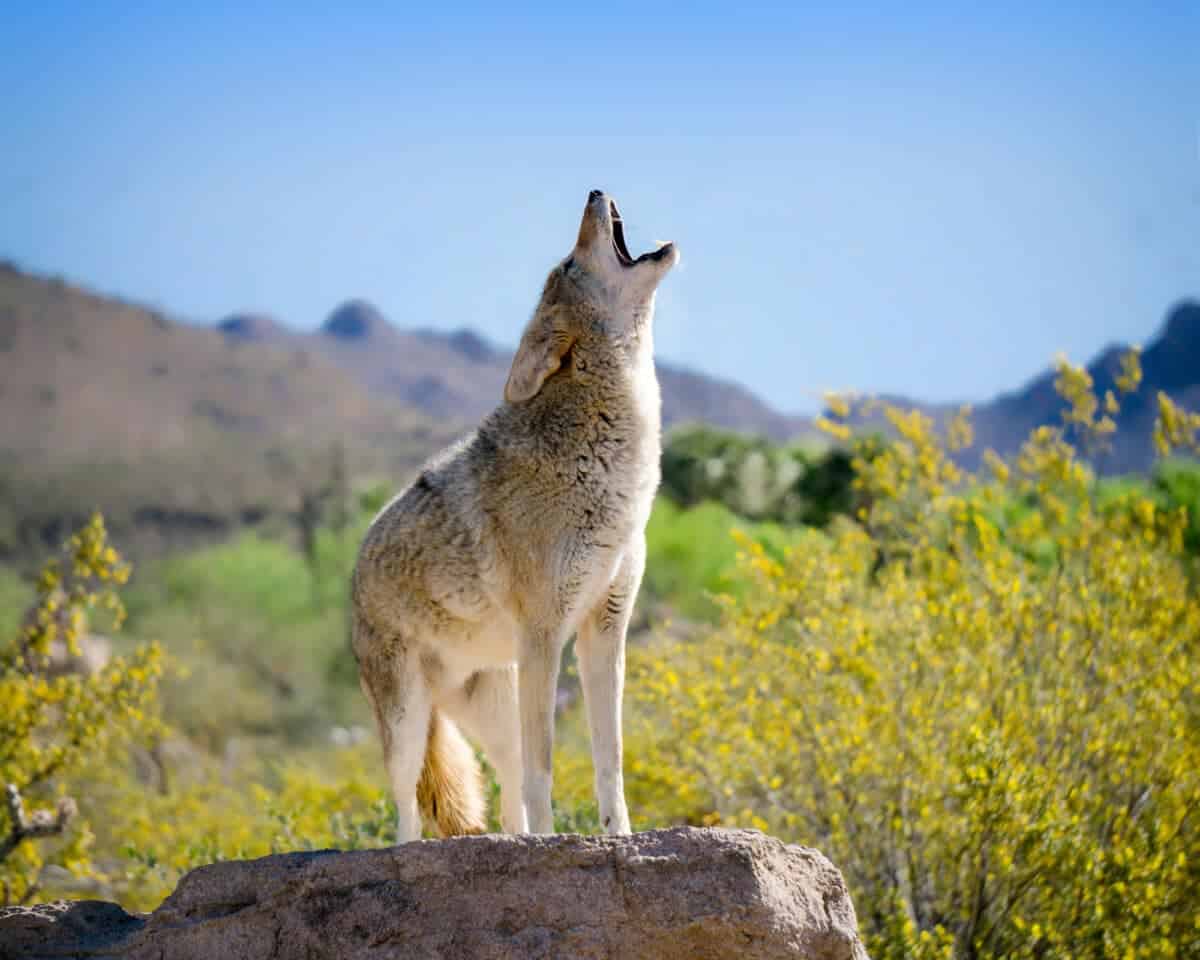
Coyote Mexico Via Shutterstock
Ohio’s coyotes have become an integral part of the state’s natural heritage, contributing to its ecological diversity and serving as a testament to the resilience of wildlife in the face of changing landscapes.
So, as we commemorate their presence in Ohio for over a century, it’s essential to celebrate the unique qualities and contributions of these fascinating predators.
- Ecological Significance
Coyotes play a vital role in Ohio’s ecosystems by regulating populations of prey species and controlling rodent populations. Their presence helps maintain a healthy balance within the natural environment, contributing to the state’s overall ecological stability and biodiversity.
- Adaptable Survivors
Coyotes have demonstrated remarkable adaptability, thriving in various habitats across Ohio, including forests, rural areas, and even urban landscapes.
Their ability to adapt to changing conditions showcases their resilience and evolutionary prowess, symbolizing nature’s ability to adapt and persist.
- Coexistence and Appreciation
Therefore, as we celebrate the presence of coyotes in Ohio, it’s crucial to foster a sense of coexistence and appreciation. Moreover, understanding their behavior, implementing preventative measures, and promoting responsible interactions can minimize conflicts and ensure a harmonious relationship between humans and coyotes.
Key Points
| Coyotes in Ohio are top predators, present for over a century |
| Ohio’s coyote population has been booming |
| Coyotes pose threats to agriculture, including livestock predation and crop damage |
| Promoting human-coyote coexistence is important for minimizing conflicts |
| Ongoing research and conservation efforts are crucial for understanding coyote behavior and developing management strategies |
| Celebrating Ohio’s coyotes as an integral part of the state’s natural heritage |
The Bottom Line
Overall, Ohio’s predatory coyote population presents both challenges and opportunities for coexistence. Moreover, understanding the ecological significance of these adaptable predators and implementing effective management strategies are key to maintaining a balance between wildlife conservation and human interests.
So, in the future, let us continue to celebrate the presence of Ohio’s coyotes, recognizing their importance in the natural ecosystem and working together to ensure a future where humans and coyotes can coexist in harmony.
If you enjoyed this article as much as me, see below for our related animal articles!
Next up: Unveiling the Mystique: Exploring Texas’s Mountain Lion Population, Explore Florida’s Bull Shark Population, River Showdown: Otter Outwits A Crocodile, Explore Pennsylvania’s Coyote Population, Meet New York’s Urban Coyote Population.
- Camper Finds Himself Surrounded By Alligators In Middle Of Night - May 3, 2024
- Have You Ever Seen A Sword Fighting Dog? - May 3, 2024
- Pro Athlete Rescues Stray Dog Who Kept Showing Up To Practice - May 2, 2024

